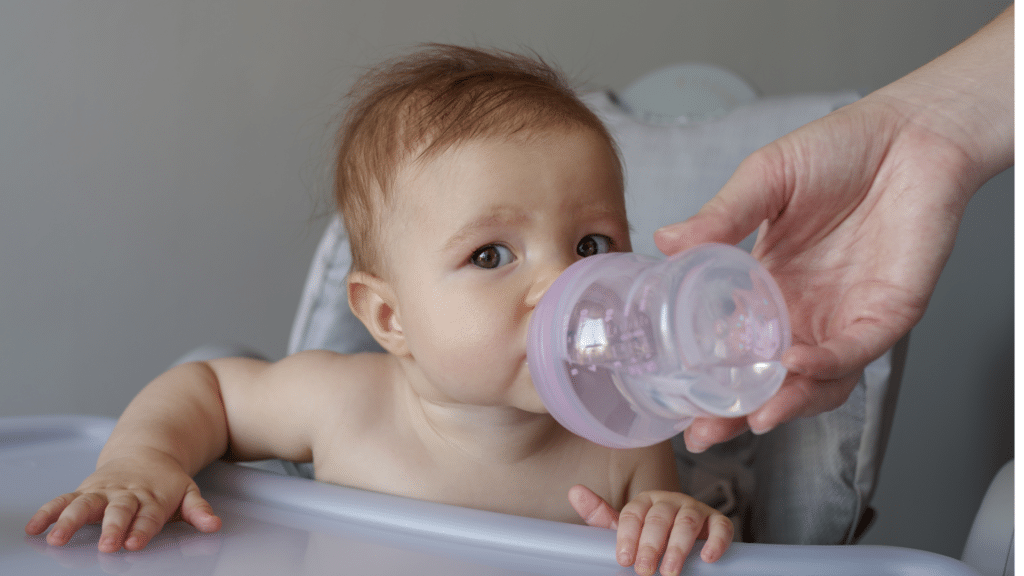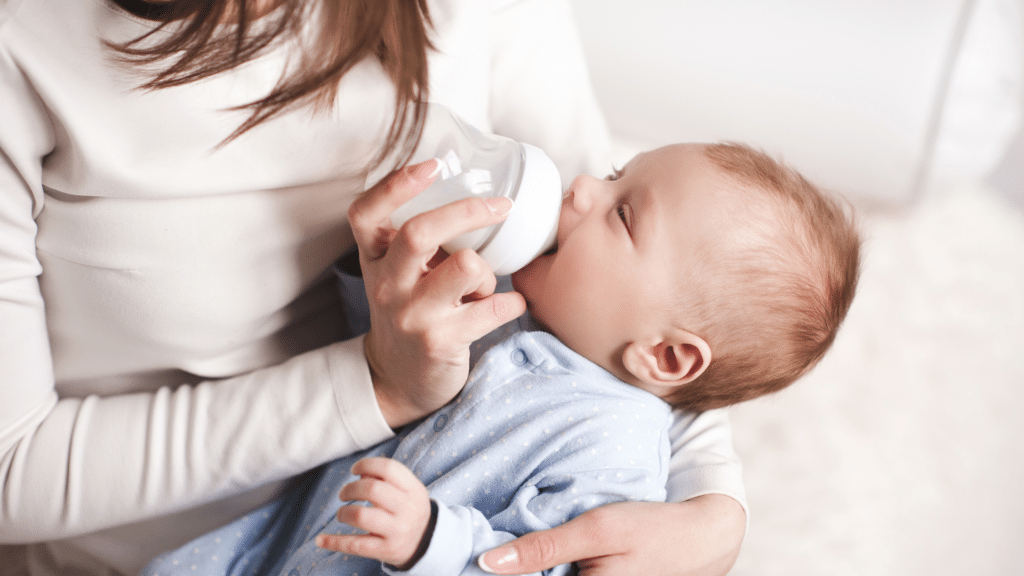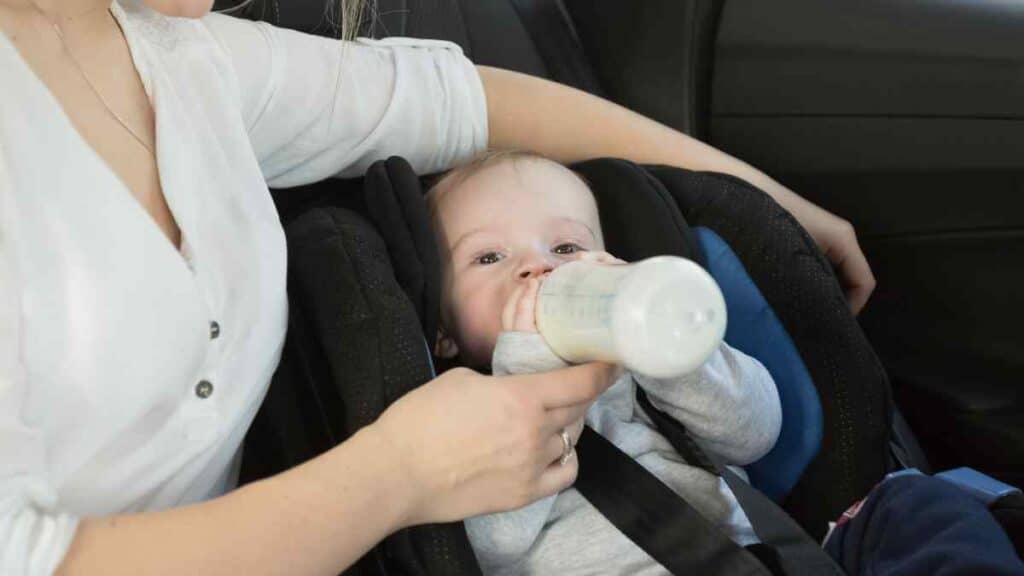Being a new parent is both a joyous and challenging endeavour. Among the myriad aspects of caring for your infant, understanding their hydration and nutritional needs is key to their healthy growth and overall wellbeing. Introducing water to your baby’s diet is an essential milestone which comes with many considerations and nuances that need to be addressed. This article aims to provide a solid foundation for parents embarking on this journey, offering in-depth insights into the right time, quality, and ways of introducing water to babies.
We meticulously curated this guide based on expert advice and extensive research, with the aim of delivering concise, clear, and practical information. The guidelines presented here will make the process more navigable for parents, promoting the confident and informed management of their baby’s hydration needs. Through this post, we hope to provide parents with empowering information, facilitating the crucial tasks of maintaining an infant’s appropriate hydration and nutrition, whilst fostering their natural progression towards a balanced and diverse diet.

When Can Babies Go Without Formula or Breastmilk?
The World Health Organization and many other health experts recommend exclusive breastfeeding or feeding your baby with infant formula for the first six months of life. This is to ensure they’re getting all the nutrients they need for healthy growth and development.
Signs of Readiness for Introducing Water
You can start introducing water to your young babies’ diet in small amounts once they begin eating solid foods, typically around 6 months of age.
Certain indicators can tell you when your baby may be ready for water:
- Starts eating solid foods: Once your baby starts eating solid foods, they may require a bit more hydration, which is where water comes in. Until then, though, breastmilk or formula should provide all the hydration they need.
- Can sit up with support: Typically, babies who are ready for water can sit up with some support and have decent control over their head and neck movements.
- Shows interest in your drinking water: If your baby seems interested when you’re drinking, it may be an indication they’re ready for some sips of water.
Appropriate Age to Begin Offering Water
In general, it’s advised to start offering your baby sips of water when they start eating solid foods, typically around 6 months of age. It’s important to note that the amount of water should be very limited at first, and water should never replace breastmilk or baby formula as the main source of nutrition until after the baby’s first year of life. Beyond one year, your baby’s diet will start to be more diverse and will incorporate more water.
As always, it’s recommended to consult with your pediatrician, as per recommendations of the American Academy of Pediatrics, to consider your baby’s individual needs and circumstances.

Gradual Transition to Water: Ensuring Nutritional Needs
Water plays a major role in everybody’s diet, babies included. Once your little one starts consuming solid foods, babies drink water begins to feature in their diet alongside breastmilk or formula but in small quantities.
As you introduce water, it is crucial to remember that this new component should supplement the baby’s nutritional needs, not replace them. Breastmilk or formula remains the primary source of essential nutrients for your baby for the first year, and these should not be reduced when introducing water.
The challenge here is to incorporate water without compromising your baby’s nutrition. It’s more about striking a delicate balance rather than an outright switch. Start by offering small sips of water during meal times which can not only assist in the digestion of solid foods but also acclimate your baby to the taste of water. You might also consider offering water in a sippy cup or a straw cup as part of the elements to play on a high chair – this helps the baby get used to handling a cup and develop cup drinking skills while keeping the activity fun and pressure-free.
In the early stage, ensure the quantity of water remains limited to avoid water intoxication, gradually increasing the amount as your baby grows older and consumes a more varied diet. Remember, the goal is to complement your baby’s diet with water, not to use it as a primary hydration source until after the first year of life. Consistently monitoring and adapting based on your baby’s needs and their progression in cup drinking will ensure a smooth and healthy transition.

Quality and Safety of Water for Babies
Every parent wants the best for their child and a major part of ensuring their health is maintaining high water quality and safety. This not only involves understanding what is in your tap water but also knowing how to provide the safest and most beneficial water for your baby.
Concerns About Tap Water Safety
Many of us rely heavily on tap water, but is it the right choice for your baby? Tap water isn’t inherently unsafe, but certain areas may suffer from contamination issues that can negatively impact your child’s health. Common concerns include high levels of lead, bacteria, and other harmful contaminants. These concerns underline the importance of understanding your tap water source, its treatment process and, if needed, pursuing additional filtration steps to ensure safety.
The Importance of Clean, Filtered Water
When it comes to babies, every ingredient we use matters – and that includes water. Whether you’re mixing formula, preparing porridge, or simply offering your baby a drink, it’s crucial to use clean, filtered water. Filtered water has undergone processes that remove harmful contaminants, ensuring a safer, cleaner option for your little one.
Waterborne Contaminants to Be Aware Of
While tap water can contain a range of possible contaminants, some are particularly harmful to babies. A few of these include:
- Lead: Exposure to lead can cause developmental issues in young children. Lead can sometimes get into tap water through corroded pipes.
- Nitrates: Particularly common in rural areas where well water might be used, nitrates are highly harmful to infants and can cause a condition known as ‘blue baby syndrome’.
- Bacteria and Viruses: While water treatment facilities typically remove these, some can still remain in the water. In babies, these can cause gastrointestinal distress and other illnesses.

Making the Transition: Tips and Best Practices
Introducing water to a baby’s diet can feel overwhelming. But with sensible guidance, caregivers can help babies drink water and make the transition seamlessly. Here we offer some practical tips for introducing water to babies, using baby-friendly containers, and emphasizing the role of responsive feeding during the transition.
Practical Tips for Introducing Water to Babies
The key to introducing water to babies involves gradual changes and attentiveness to their needs. Here are some practical tips:
- Wait Until Six Months: As per World Health Organization (WHO) guidelines, it’s best to wait until your baby is six months old before introducing water. Before this time, breastmilk or formula provides all the necessary hydration.
- Start Small: Begin by offering a few sips of water during mealtimes. This helps your baby get used to the new taste.
- Monitor Reactions: Every baby is different. Pay attention to how your baby responds to water and adjust quantities and frequency based on their reactions and needs.
Baby-Friendly Containers Suggestions
The type of container you use to serve water to your baby can help make the transition smoother. Here are some suggestions:
- Sippy Cups: These are a popular choice for introducing water. They’re spill-proof and come with handles, making them ideal for tiny hands.
- Straw Cups: These can be a great way to help your baby learn how to suck, utilizing the same muscles they use during breastfeeding.
- Regular Cups: Introducing a regular cup early (under supervision) can aid in transitioning from bottles and teach them how to control the flow of water, improving their drinking skills.
Responsive Feeding and Its Role
Responsive feeding plays a crucial role in making the transition to water easier for both the caregiver and the baby. It involves paying close attention to your baby’s hunger and fullness cues. This can help you understand when they might need more water, especially when they start eating more solid foods.
And don’t forget, if you’re using formula, it’s vital to understand how to safely prepare baby formula and mix formula correctly. Missteps can lead to nutritional imbalances or even illness. Always follow the manufacturer’s instructions carefully.

Staying Mindful of Hydration Needs: Finding Balance and Monitoring Progress
Attaining optimal hydration for your baby is pivotal, particularly as they embark on their growth trajectory and their nutritional demands begin to shift. This is more than just offering clean, safe water into their diet and it also requires you to keenly monitor how much your baby is drinking and when. Moreover, their fluid intake doesn’t exclude other nourishing fluids, hence the need for a harmonious balance. As your baby transitions from relying solely on breast milk or formula to incorporating water and exploring other food sources, paying close attention to their hydration becomes even more crucial. Therefore, a discerning and dynamic approach to their hydration can contribute to your baby’s health and pave the way for their eventual successful transition to solid foods.
Evolution of Hydration Needs as Babies Grow
In the initial few months, breast milk or formula entirely satisfy babies’ hydration needs. The introduction of solid foods, beginning around six months, triggers a shift in their hydration requirements. This milestone is typically the ideal time to start offering small quantities of water during meals, thereby instilling healthy hydration practices early on.
As their solid food consumption grows, so will their needs for water. By the time they reach their first birthday, water will have become an essential part of their daily fluid requirement. However, it’s crucial to note that milk will remain a key provider of vital nutrients and hydration, retaining its importance in your baby’s diet well beyond this age.
Monitoring Baby’s Cues and Signals for Thirst
Babies are excellent at signaling their needs, and this includes thirst. Keeping an eye out for signs and cues that your baby is thirsty, such as reaching for a cup or showing irritation, can help ensure they stay well hydrated. Ensuring your baby has regular, clear wet diapers is another good indication that they’re staying hydrated. If you notice your baby has fewer wet diapers or their urine is darker than usual, these are typically signs of dehydration.
Balancing Water with Other Fluids
While the introduction of water is an important milestone, it’s equally important not to overly rely on it to the point that it replaces other crucial fluids. Milk – whether breast milk or formula – should remain the primary liquid diet for babies until they’re at least 12 months old. Additionally, be cautious about introducing too much juice, as it’s high in sugar and could potentially lead to excessive weight gain or tooth decay. Thus, proper water drinking, and balanced fluid intake promote healthy habits in babies.

Conclusion
In conclusion, introducing baby water to infants is an important milestone that requires patience, understanding of your baby’s cues, and the right approach. Starting around six months, when babies begin eating solid foods, parents can begin offering small sips of water during mealtimes. It’s vital to ensure that the quality of water offered is safe and clean, devoid of harmful contaminants. As your little one grows, their hydration needs will evolve, and caregivers must strike a balance between water, breastmilk, formula, and other fluids.
Ultimately, every baby is different, and the key to fostering a healthy relationship with water and ensuring proper hydration lies in being responsive and attentive to your baby’s needs. Keep in mind that consulting with your pediatrician throughout this process can provide invaluable guidance tailored to your baby’s specific circumstances and requirements. By doing so, you can help support your baby’s growth and development while giving them the essential foundation for a healthy and satisfying relationship with water.
Did this article help you? Please leave a comment below. If you have any questions, don’t hesitate to ask.



